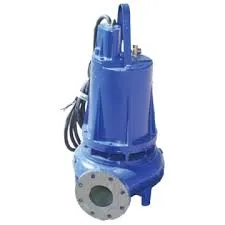English
- Afrikaans
- Albanian
- Amharic
- Arabic
- Armenian
- Azerbaijani
- Basque
- Belarusian
- Bengali
- Bosnian
- Bulgarian
- Catalan
- Cebuano
- Corsican
- Croatian
- Czech
- Danish
- Dutch
- English
- Esperanto
- Estonian
- Finnish
- French
- Frisian
- Galician
- Georgian
- German
- Greek
- Gujarati
- Haitian Creole
- hausa
- hawaiian
- Hebrew
- Hindi
- Miao
- Hungarian
- Icelandic
- igbo
- Indonesian
- irish
- Italian
- Japanese
- Javanese
- Kannada
- kazakh
- Khmer
- Rwandese
- Korean
- Kurdish
- Kyrgyz
- Lao
- Latin
- Latvian
- Lithuanian
- Luxembourgish
- Macedonian
- Malgashi
- Malay
- Malayalam
- Maltese
- Maori
- Marathi
- Mongolian
- Myanmar
- Nepali
- Norwegian
- Norwegian
- Occitan
- Pashto
- Persian
- Polish
- Portuguese
- Punjabi
- Romanian
- Russian
- Samoan
- Scottish Gaelic
- Serbian
- Sesotho
- Shona
- Sindhi
- Sinhala
- Slovak
- Slovenian
- Somali
- Spanish
- Sundanese
- Swahili
- Swedish
- Tagalog
- Tajik
- Tamil
- Tatar
- Telugu
- Thai
- Turkish
- Turkmen
- Ukrainian
- Urdu
- Uighur
- Uzbek
- Vietnamese
- Welsh
- Bantu
- Yiddish
- Yoruba
- Zulu
Telephone: +86 13120555503
Email: frank@cypump.com
Sep . 13, 2024 16:31 Back to list
slurry pump suction piping
Understanding Slurry Pump Suction Piping
Slurry pumps play a pivotal role in various industrial processes, particularly in mining, construction, and waste management. The efficiency of these pumps heavily relies on the design and configuration of the suction piping system. An optimized suction piping layout not only enhances pump performance but also mitigates potential issues related to wear, blockages, and hydraulic performance.
What is Slurry Pump Suction Piping?
Suction piping is the section of the piping system that conveys the slurry from its source to the pump inlet. This piping is crucial because the characteristics of the slurry, such as particle size, density, and viscosity, dictate how the pump will perform. The design of the suction piping must be meticulously considered to prevent issues such as cavitation, excessive pressure drops, and the formation of solids at the pump inlet.
Key Factors in Designing Suction Piping
1. Pipe Diameter Proper selection of pipe diameter is fundamental. An undersized pipe can lead to excessive velocities that may cause wear and increase the risk of cavitation. Conversely, an oversized pipe may result in sedimentation, where solids settle out of the slurry, creating blockages. The pipe diameter should be chosen based on the specific slurry characteristics and flow requirements.
slurry pump suction piping

2. Pipe Material The material used for suction piping should be resistant to abrasion and corrosion, as slurry can contain abrasive particles that wear down conventional materials quickly. Common materials include rubber-lined pipes, high-chromium alloys, or even plastic composites that can withstand the harsh conditions of slurry transport.
3. Suction Pipe Length and Configuration The length and configuration of the suction piping should be minimized to reduce friction losses. Bends, elbows, and fittings should be strategically placed to ensure smooth flow. Long runs of straight piping are preferable, but when bends are necessary, gentle curves should be used instead of sharp angles to optimize flow dynamics.
4. Elevation and Orientation The elevation of the suction pipe relative to the slurry source is crucial. It should be designed to avoid situations where the pipe might be siphoning air or running dry. Maintaining a constant slope towards the pump can help in keeping the pipe full of slurry and preventing air entrainment.
5. Suction Strainers and Valves Incorporating a suction strainer can help filter out large particles that might damage the pump. However, careful attention must be given to the strainer's design to prevent excessive pressure loss. Valves in the suction line should be positioned to facilitate easy maintenance without disrupting the overall flow.
Conclusion
Effective slurry pump suction piping is vital for ensuring optimal performance and longevity of the pumping system. A well-designed suction line reduces energy costs, minimizes wear and tear on the pump, and prevents operational challenges that can lead to increased downtime. By understanding the intricacies involved in the design and maintenance of suction piping, industries can significantly enhance their slurry handling processes, leading to improved productivity and cost efficiency. Proper planning and execution in this area are essential for the smooth operation of any slurry transport system.
-
Horizontal Split Case Pump with GPT-4 Turbo | High Efficiency
NewsAug.01,2025
-
ISG Series Pipeline Pump - Chi Yuan Pumps | High Efficiency, Durable Design
NewsAug.01,2025
-
Advanced Flue Gas Desulfurization Pump with GPT-4 Turbo | Durable & Efficient
NewsJul.31,2025
-
ISG Series Vertical Pipeline Pump - Chi Yuan Pumps | Advanced Hydraulic Design&Durable Construction
NewsJul.31,2025
-
ISG Series Vertical Pipeline Pump - Chi Yuan Pumps | Energy Efficient & Low Noise
NewsJul.31,2025
-
pipeline pump - Chi Yuan Pumps Co., LTD.|High Efficiency&Low Noise
NewsJul.31,2025










